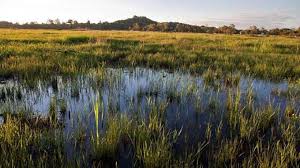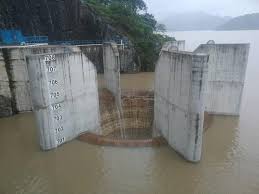Moses Ziyambi
Zimbabwe has made significant strides to address the climate change in the country, much of whose effects are more profoundly felt in the droughts and floods that have hit the country more frequently since the turn of the century, evidence on the ground shows.
The country is party to the United Nations Framework Convention on Climate Change (UNFCCC) of 1992 which got ratified in September of that same year.
The convention sets out a framework for action aimed at sufficiently stabilising atmospheric concentrations of greenhouse gases in the atmosphere to avoid anthropogenic interference with the climate system.
Being a signatory to the Paris Agreement which was reached in 2015, Zimbabwe came up with its set of Nationally Determined Contributions (NDCs) as part of efforts to reduce its carbon footprint.
The Paris Agreement, which Zimbabwe ratified in 2017, requires member countries to incrementally revise their NDCs every five years.
Through the NDCs, the country made commitments to cut its carbon footprint by 40 percent by year 2050; representing a fair and ambitious seven percent increase in emission reduction target from the previous commitment.
“The crafting of Zimbabwe’s Revised NDC was informed by the National Development Strategy 1 (2021- 2025) which seeks to transform Zimbabwe into an upper-middle income economy by 2030. In this regard, Zimbabwe will pursue a holistic and balanced development trajectory, which seeks to balance national development and fulfilment of our international obligations on emissions reduction,” said the Minister of Environment, Climate, Tourism and Hospitality Industry Mangaliso Ndhlovu.
In the 2023 national budget statement which was delivered by the Minister of Finance and Economic Development, Professor Mthuli Ncube on November 25, 2022, the Ministry of Environment, Climate, Tourism and Hospitality Industry was allocated ZWL$3.7 billion which at the time amounted to US$20 million.
The budget allocation was clearly insufficient to address all climate change-related issues in the country for the year, particularly the need to build adaptive capacities in ordinary communities.
However, the allocation, which came in face of the government’s austerity measures, demonstrates some commitment to put resources where they are needed as outlined in the country’s National Development Strategy 1 (NDS1) policy document.
The country’s troubled economy also means that most of the government’s priority programme areas are not sufficiently funded although foreign donors and donor agencies make some valuable interventions.
Zimbabwe’s fight against climate change receives support from such technical partners as Common Market for Eastern and Southern Africa (COMESA), Food and Agriculture Organization (FAO), ICLEI Africa, International Labour Organization (ILO), International Renewable Energy Agency (IRENA), Stockholm Environment Institute (SEI), United Nations Development Programme (UNDP), United Nations Environment Programme (UNEP) and the World Bank.
Under the Environmental Protection, Climate Resilience and Natural Resource Management cluster of NDS1, one of the objectives is ‘strengthening capacity building and awareness on climate change adaptation and mitigation’.
Through this, the government envisages to promote research and development, education, training and awareness for improved ecosystems health.
“Zimbabwe is doing a lot, but so much more remains to be done if the country is to reach its NDC targets while growing itself to a greener economy without large scale disruption of its already not-so-strong industrial systems. The country needs massive financial support in the form of grants to finace sustainable growth,” said climate change activist Kudzaishe Seti, who works with Green Institute, a Chipinge community-based organisation.








